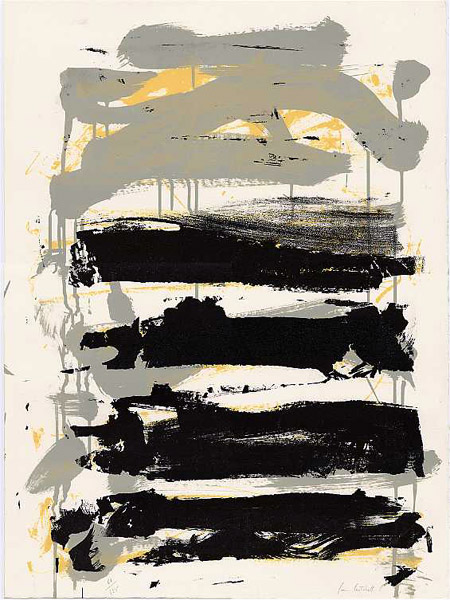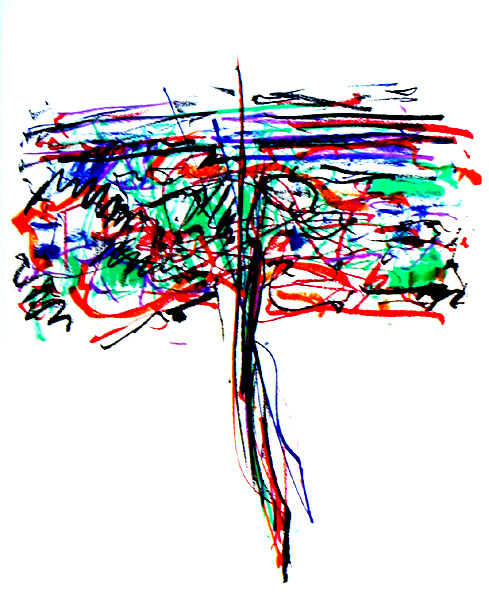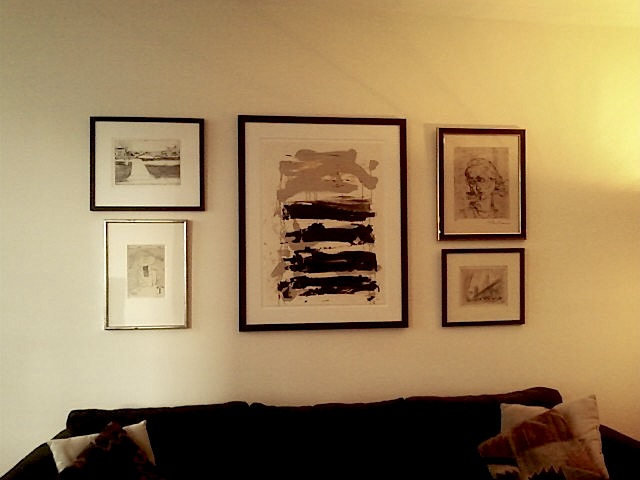
“The Paintings of Joan Mitchell” is the first large-scale Mitchell retrospective to be presented here, or anywhere. Unlike many such shows, it’s a treat, not a chore. Mitchell was among the most accessible of the abstract expressionists, a vibrant, complex colorist whose paintings are always a joy to see—one at a time. Viewed in bulk, they struck me, for all their individual beauty, as surprisingly repetitive and sometimes uncomfortably derivative (I was amazed to stumble across a whole roomful of Mitchells that looked weirdly like the late works of Hans Hofmann, the great abstract-expressionist painter-teacher—those big blocks of paint are as distinctive as a fingerprint).


The bold, almost violent horizontal swipes of “Champs (Black, Gray, and Yellow)” make it the center of attention on the wall where it hangs, and the quieter prints by Milton Avery, Richard Diebenkorn, Hans Hofmann, and John Marin that orbit tightly around it serve as a fetching complement to Mitchell’s dynamism.
It never occurred to me that “Champs (Black, Gray, and Yellow)” would in time serve as a kind of memorial to my beloved Hilary, but that is what it has become, and every time I look at the couch on which she spent so much of the last couple of years of her life, I see it hanging just to the left of where she always sat and…well, I remember her with longing and love.
